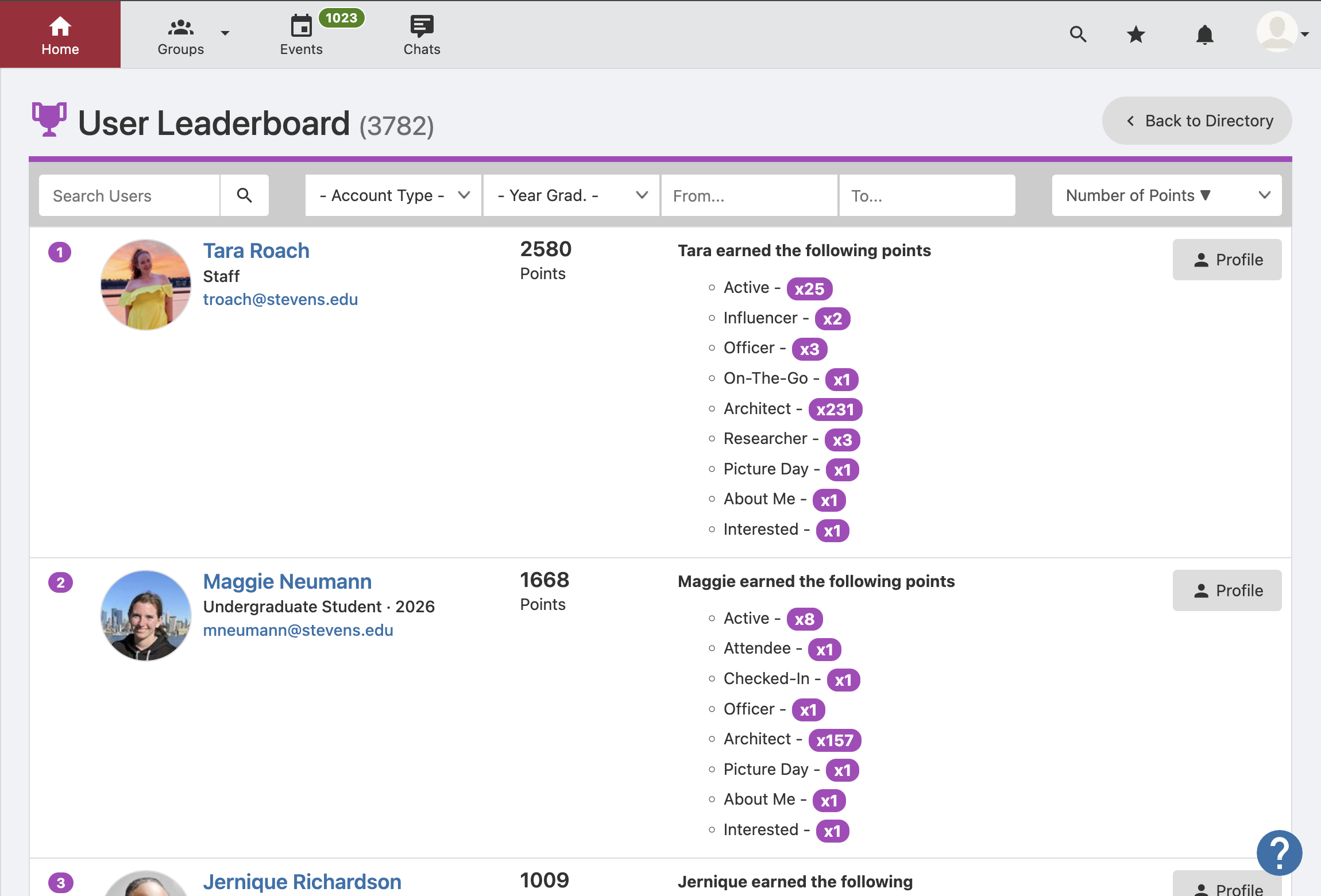When compared to the previous iteration of the platform, many of the new DuckLink’s differences have elicited positive reactions from students, who are happy to see the new functionality and user experience improvements. Some of the new features, however, are raising eyebrows more than fostering positive interactions.
Upperclassmen may find the updated DuckLink site unfamiliar in many respects. A once bland webpage with basic search functions for campus organizations has turned into a sophisticated campus-wide platform. By clicking the organization’s tab on the site, users find an alphabetical listing of all groups, and by being a member of these organizations, one gets access to their schedule of meetings and events.
Also, on this page, there is a button labeled “leaderboard” that is available for all students. This page is, as it suggests, a ranking of each organization. Every club on this page has a given number of points, which places them higher or lower in the rankings. Perhaps even less expected, every Stevens student and faculty member on DuckLink is also ranked on a leaderboard.
Many have wondered what these points mean for the clubs. The ranking of the clubs is not based on subjective quality checks but rather on a semi-opaque point system. As of February 15, the top organization is Stevens Serves, closely followed by the fraternity Alpha Phi Omega. With about 1125 and 992 points, respectively, as of February 15, they leave the other organizations in the dust.
Nearby, the individual leaderboard is topped by Leadership & Service Coordinator Tara Roach, who is trailed by other staff and faculty.
Students have been left wondering: How are these points earned, and why do we even need a leaderboard in the first place?
The use of the leaderboard is most likely to promote the most active clubs and organizations. Activity money for clubs correlates with both size and average attendance. Safe to say, these are the two aspects that receive points. The leaderboard system allows students to observe which clubs are the most popular on campus rather than relying on word of mouth as students have previously. Because of this, it promotes the groups that are large and have frequent turnout the most. But the point platform does provide other avenues for clubs to rise through the ranks, namely, through hosted and contributed events. The more events that are run for the campus community, the more points the club can earn. This creates a positive feedback loop of good events with good attendance, leading to a higher ranking. That has real potential to impact campus in a positive way.
The system for individual rankings is also unclear but involves how often students and staff engage with the new DuckLink system. Actions like creating events, sending messages in group forums, and making announcement emails reward the user with points, which are grouped into categories like “Influencer” and “Architect.”
What that leaves us with is how undergraduate students are supposed to engage with this new platform. The leaderboard implies that the platform is a useful reference for organizations that undergraduates may want to be a part of, but also as a convenient advertisement for events to attend. Due to the social aspects of the platform, specifically the messaging and forum applications, DuckLink is meant to be used to communicate with fellow students about activities on campus. If members of a group have a question about something related to the event or meeting, there is now a streamlined place for questions that do not have to be created in a third-party format, like Discord or Slack.
The new updated format of DuckLink is very exciting and interesting to students. Despite the confusion and growing pains, with the more efficient site, DuckLink may help in facilitating a new era of involvement on campus.
